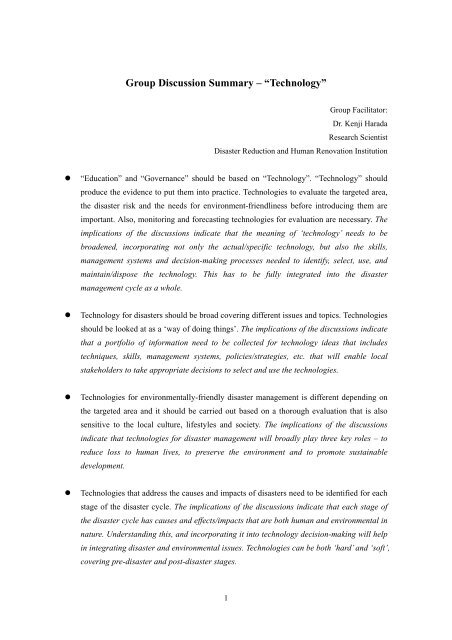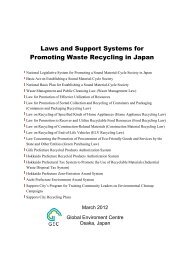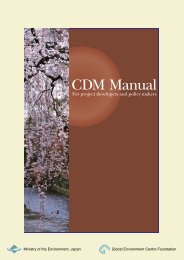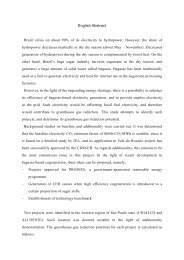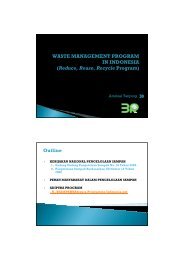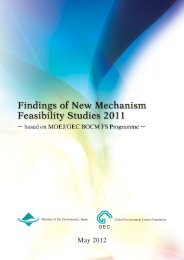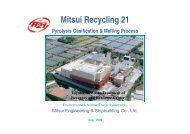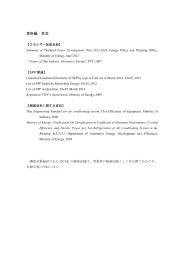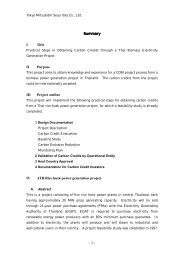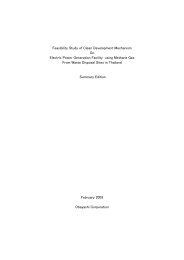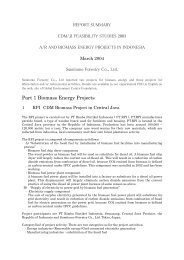Group Discussion Summary â âTechnologyâ
Group Discussion Summary â âTechnologyâ
Group Discussion Summary â âTechnologyâ
You also want an ePaper? Increase the reach of your titles
YUMPU automatically turns print PDFs into web optimized ePapers that Google loves.
<strong>Group</strong> <strong>Discussion</strong> <strong>Summary</strong> – “Technology”<br />
<strong>Group</strong> Facilitator:<br />
Dr. Kenji Harada<br />
Research Scientist<br />
Disaster Reduction and Human Renovation Institution<br />
• “Education” and “Governance” should be based on “Technology”. “Technology” should<br />
produce the evidence to put them into practice. Technologies to evaluate the targeted area,<br />
the disaster risk and the needs for environment-friendliness before introducing them are<br />
important. Also, monitoring and forecasting technologies for evaluation are necessary. The<br />
implications of the discussions indicate that the meaning of ‘technology’ needs to be<br />
broadened, incorporating not only the actual/specific technology, but also the skills,<br />
management systems and decision-making processes needed to identify, select, use, and<br />
maintain/dispose the technology. This has to be fully integrated into the disaster<br />
management cycle as a whole.<br />
• Technology for disasters should be broad covering different issues and topics. Technologies<br />
should be looked at as a ‘way of doing things’. The implications of the discussions indicate<br />
that a portfolio of information need to be collected for technology ideas that includes<br />
techniques, skills, management systems, policies/strategies, etc. that will enable local<br />
stakeholders to take appropriate decisions to select and use the technologies.<br />
• Technologies for environmentally-friendly disaster management is different depending on<br />
the targeted area and it should be carried out based on a thorough evaluation that is also<br />
sensitive to the local culture, lifestyles and society. The implications of the discussions<br />
indicate that technologies for disaster management will broadly play three key roles – to<br />
reduce loss to human lives, to preserve the environment and to promote sustainable<br />
development.<br />
• Technologies that address the causes and impacts of disasters need to be identified for each<br />
stage of the disaster cycle. The implications of the discussions indicate that each stage of<br />
the disaster cycle has causes and effects/impacts that are both human and environmental in<br />
nature. Understanding this, and incorporating it into technology decision-making will help<br />
in integrating disaster and environmental issues. Technologies can be both ‘hard’ and ‘soft’,<br />
covering pre-disaster and post-disaster stages.<br />
1
• We need to educate people (citizen and government) about the importance of the<br />
technologies in various opportunities. The implications of the discussions indicate that<br />
technologies for disaster management, for example, for urban infrastructure (flood control,<br />
building retrofitting), information management (early warning, research), damage<br />
assessment, preparedness etc. need to be properly packaged and integrated into the overall<br />
processes of disaster management – including education, evacuation drills,<br />
policy/programme development etc.<br />
2


